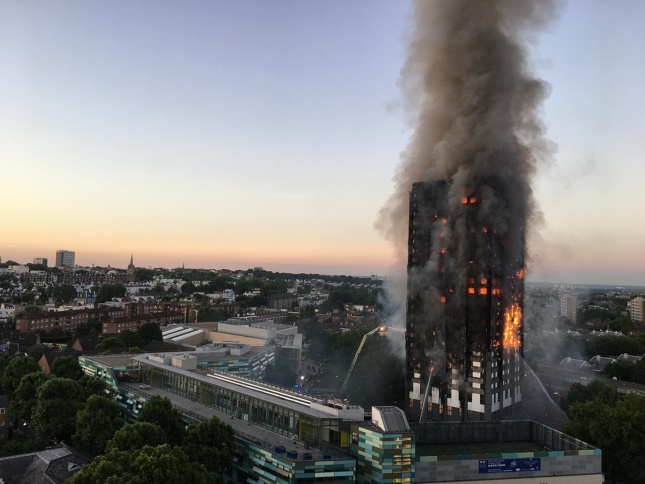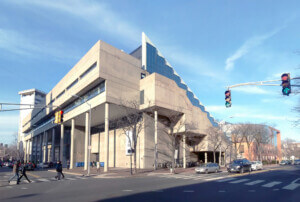In new developments that emerged last week in the public inquiry of the Grenfell Tower tragedy, Bruce Sounes, the architect tasked with overseeing the refurbishment of the 24-story West London apartment tower, revealed that he was unaware that the plastic-filled aluminum composite rain screen cladding used in the project was combustible. Furthermore, Sounes said that he had not fully familiarized himself with existing governmental regulations “demanding external walls must adequately resist the spread of fire,” as The Guardian reported.
On June 14, 2017, a small fire sparked in a fourth-floor apartment rapidly engulfed the 43-year-old, council-owned housing block in North Kensington as flames climbed upwards along the tower’s recently refurbished exterior. The fire raged for nearly 60 hours, completely gutting the structure while claiming 72 lives total in the process. Dozens of others suffered injuries. Serious concerns about fire safety had been brought to the attention of the building’s operator, the Kensington and Chelsea Tenant Management Organisation, both prior to and after the refurbishment, which was completed in 2016. Among these issues: The absence of a central fire alarm system, a dearth of emergency lighting, the presence of long-expired fire extinguishers, and the fact that the aging tower had only one central staircase for all 120 units (127 units at the time of the fire).
The first phase of an official public inquiry into the tragic fire kicked off in September 2017, and included key evidence from emergency responders, building residents, engineers, and fire safety experts. The second phase of the inquiry commenced in January 2020, with the first section focused on the 2015-2016 refurbishment.
In his testimony, Sounes, an associate architect at London firm Studio E Architects, admitted ignorance to issues such as fire spread and the regulatory guidance surrounding building safety features meant to curb the spread of fire in tall structures. Sounes claimed that ensuring the refurbishment—including specific products used in the refurbishment—exceeded fire safety guidelines was not in his professional purview as lead project architect. He told inquiry counsel that “it was the responsibility of the council’s building control department to check on compliance and other expert consultants were expected to advise,” according to the Guardian.
“We asked for advice,” the BBC quoted Sounes as telling the inquiry, “but it wasn’t for us to… satisfy ourselves because I don’t think that was within our ability.”

Sounes also confirmed in the inquiry that he had no previous experience working on high-rise projects or with the type of flammable polyethylene composite cladding material used in the refurbishment of Grenfell Tower.
“I thought their melting temperature was quite high,” Sounes said of the insulating panels. “I was not aware they were combustible or a risk.”
Speaking at the inquiry, Andrzej Kuszell, founding partner of Studio E Architects, said that his firm’s previous lack of experience working with high-rises should not be considered as a factor in the incident.
“The issue of whether a project poses new challenges is not, I think—if that is the implication, that somehow we were not capable of doing the project, I think that is false,” Kuszell explained. “Because clearly every project, in your experience, there comes a point when every project is a first, and we had actually been dealing with projects of quite some sophistication and complexity as firsts.”
Kuszell went on to apologize for the horrific incident while also blaming lax governmental fire regulations for allowing it to ever happen.
“If we had understood that the building regulations were not robust, if we had understood that we can’t trust a certification, if we had understood that advice that was being given from parties who were either specialists or marketing products were that unreliable and misleading—this is so sad to say, but I don’t think this tragedy would have happened,” he said.
“I’m really, really sorry for all of you,” he said while addressing the public gallery, which was populated with surviving former residents and family members of those who perished in the fire. “I can only say to you from my heart that we really wanted to do the absolute best project we could.”
Declared as structurally sound, Grenfell Tower, site of the deadliest residential fire since World War II, continues to stand, cloaked in ghostly white sheeting. There are plans to demolish it and transform the site into a memorial, although any path forward is at least a couple of years off as the inquiry continues.











